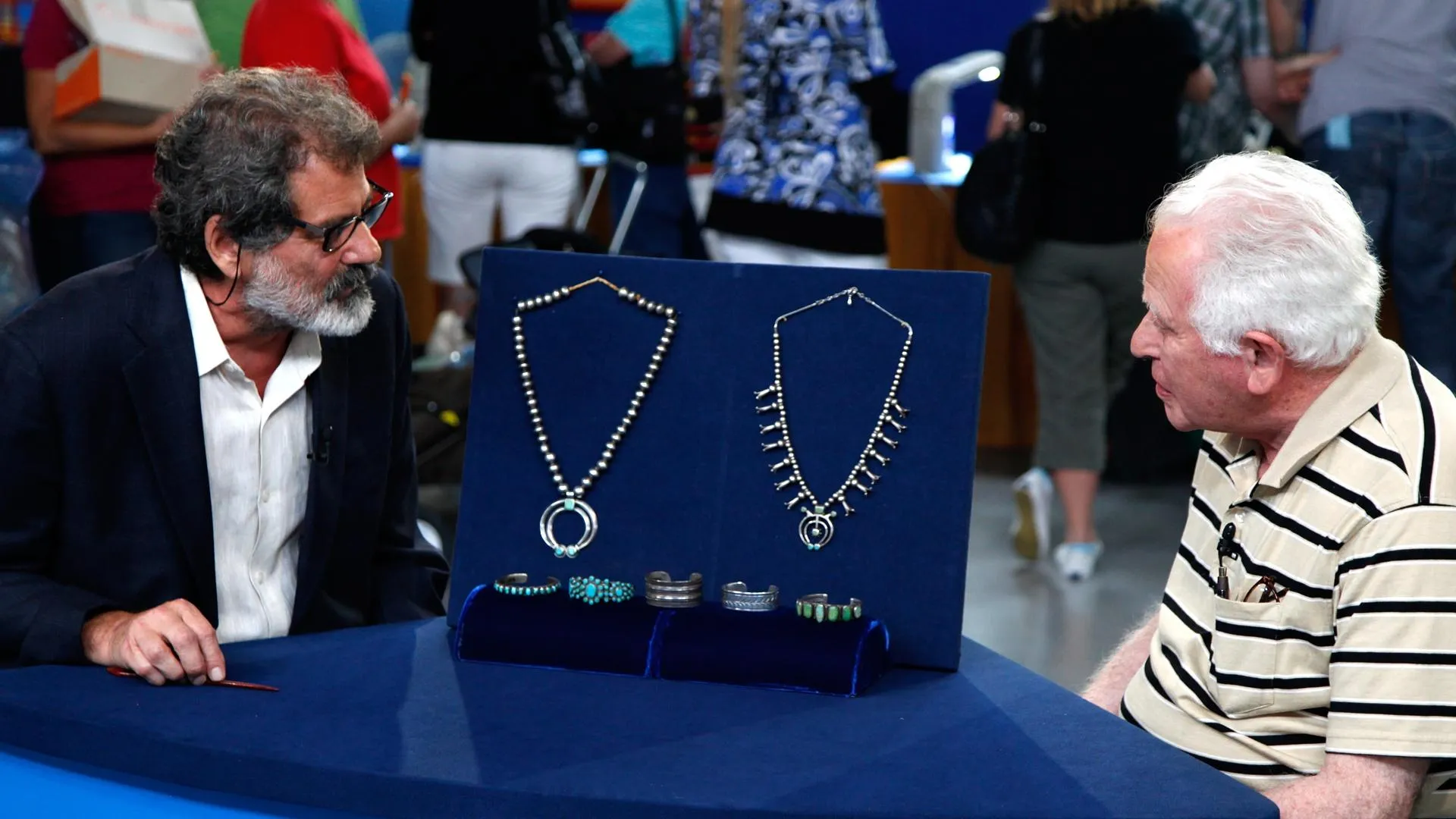GUEST: I was out shopping around looking for some stuff to put in my garage, in the mancave, and was leaving a secondhand store, a thrift store, about a half-mile from my house. It was bronze, and so I figured that it probably had some sort of value, so I bought it, but without recognizing the artist or knowing anything about it, really.
APPRAISER: And you did a little bit of research. So the artist is Gutzon Borglum, the sculptor of Mount Rushmore. He's one of the more prolific American sculptors of the earlier part of the 20th century. He studied in Paris with Rodin, and in 1927 he started Mount Rushmore, for which he's really, really well known. This was a piece that was exhibited at the St. Louis Exposition of 1904. And it's sort of an unusual subject matter for an American sculptor. Can you tell us what the subject matter is?
GUEST: Well, it's a sculpture of Nero. It's maybe a different image than most folks know of Nero.
APPRAISER: As a regal emperor.
GUEST: That's true.
APPRAISER: Ah, ruling his domain.
GUEST: Right.
APPRAISER: It's signed over here, and it has the date. And then on the back, it has the foundry, the Roman Bronze Works in New York, which was in Corona, Queens. And they were probably the leading foundry in America. They're very, very important, especially for casting the works of Frederic Remington. This is signed "Roman Bronze Works" on the back, but it also has the date, and I've really never seen that on Roman Bronze Works sculpture. The piece is cast out of bronze. It is hard to document these, and it's also hard to know how many were cast. The actual archives of the Roman Bronze Works are at the Amon Carter Museum, and you might be able to contact them. They have the records of when things were cast, and they have files of correspondence between the foundry and the artist. I just wanted to mention briefly about the condition. It does have this green, which is corrosion. It's like the Statue of Liberty in New York Harbor. It was made out of copper, and from corrosion, it turns green. It's not really supposed to do this. And I think it's something that really needs attention by a professional conservator, if you want to clean this off and just prevent it from affecting the surface more. Now, you saw it in this thrift shop, secondhand shop.
GUEST: Yeah.
APPRAISER: And what did you pay for it?
GUEST: I can't remember if I paid $7.99 or $8.99, plus tax.
APPRAISER: Plus tax.
GUEST: That's right.
APPRAISER: Did you ask them if they could do better on the price, or you just decided it was a pretty good deal?
GUEST: I figured eight dollars was probably a fair price.
APPRAISER: It's not the kind of subject matter that people think of Borglum, but it is interesting nonetheless of this great historical figure. I think in a gallery setting, this would probably be in the $6,000 to $8,000 price range.
GUEST: Great. That's wonderful. Not a bad return.
APPRAISER: Not a bad return.



